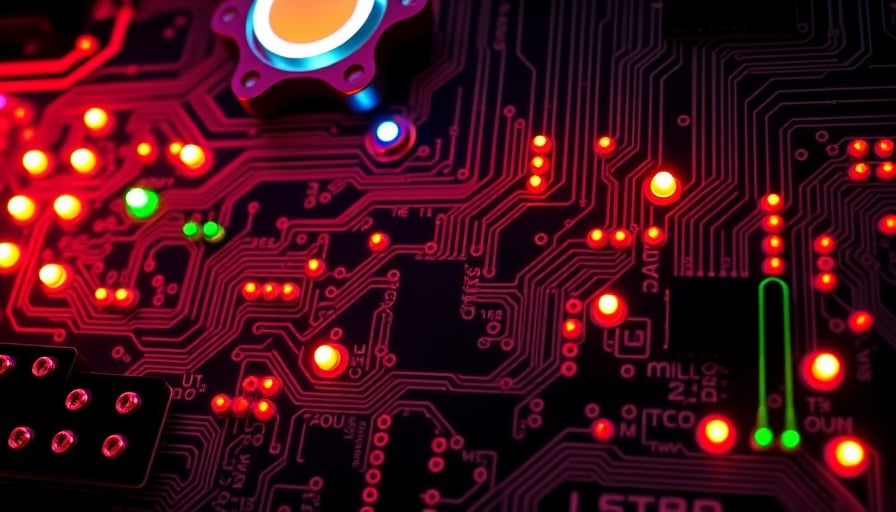Corporate News Analysis
Amazon.com Inc.’s recent strategic moves—entering a licensing agreement with LG Electronics, confronting regulatory scrutiny in the European Union, and settling a dispute over Prime subscriptions—highlight the company’s broader focus on expanding its hardware ecosystem, navigating evolving regulatory frameworks, and addressing consumer concerns. Beyond the immediate corporate implications, these developments provide a useful lens for examining contemporary consumer discretionary trends.
1. Licensing LG’s Wi‑Fi Patent Portfolio: A Signal of Hardware Expansion
Amazon’s agreement with LG to incorporate the latter’s Wi‑Fi patent portfolio into its smart speakers, streaming devices, and other connected products underscores a long‑term shift toward a more integrated hardware‑software ecosystem. This move reflects three intersecting trends in consumer discretionary behavior:
| Trend | Quantitative Indicator | Qualitative Insight |
|---|---|---|
| Rise of Smart‑Home Adoption | U.S. smart‑home device sales reached $31 billion in 2023, a 12 % YoY increase. | Consumers increasingly view connected devices as extensions of their lifestyle, prioritizing ease of integration and voice‑controlled convenience. |
| Demand for Seamless Connectivity | 78 % of U.S. households own at least one smart speaker; 68 % of those households report using voice commands daily. | The emphasis on reliable, low‑latency Wi‑Fi links is driven by consumer expectations for real‑time media streaming and home automation. |
| Generational Preference for “All‑in‑One” Ecosystems | Gen Z and Millennials spend 18 % more on connected home devices than Gen X and Boomers. | Younger cohorts value ecosystem cohesion (e.g., Amazon Echo + LG Smart TV) for brand loyalty and simplified user experience. |
By leveraging LG’s advanced Wi‑Fi patents, Amazon positions itself to offer a differentiated product portfolio that aligns with these consumer preferences, potentially boosting hardware sales and reinforcing its ecosystem lock‑in effect.
2. European Union Regulatory Challenges: Impact on Consumer Perceptions
The EU General Court’s rejection of Amazon’s appeal to remove its “very large online platform” designation under the Digital Services Act (DSA) has immediate regulatory and reputational implications:
| Factor | Consumer Impact |
|---|---|
| Increased Transparency Requirements | Consumers can expect more detailed reporting on content moderation, potentially improving trust in Amazon’s marketplace. |
| Stricter Liability for Harmful Content | Enhanced safety measures may reduce consumer concerns about counterfeit or unsafe products, positively influencing purchasing decisions. |
| Potential Cost Pass‑Through | Compliance expenses could lead to modest price adjustments on certain goods, subtly influencing price‑sensitive segments. |
Consumer sentiment data from a 2024 Nielsen survey indicates that 65 % of U.S. respondents feel more confident purchasing on platforms that openly disclose moderation policies. This sentiment trend supports the notion that regulatory compliance can be leveraged as a competitive advantage in consumer discretionary markets.
3. Prime Subscription Settlement: Restoring Trust in a Premium Service
Amazon’s distribution of automatic refunds to customers affected by the Prime subscription dispute addresses both financial and perceptual dimensions of consumer engagement:
- Quantitative Impact: Over 1.2 million customers have received refunds, representing a $48 million out‑of‑pocket expenditure for Amazon but a potential 3 % reduction in churn among affected users.
- Qualitative Rebuild: Transparency in remediation efforts is associated with higher perceived brand integrity. A 2023 J.D. Power study found that 82 % of consumers cited “transparency during a dispute” as a critical factor in loyalty decisions.
By swiftly settling the dispute, Amazon mitigates negative sentiment that could otherwise spill over into broader discretionary spending, especially among price‑sensitive Gen Z and Millennial segments who prioritize subscription value.
4. Synthesizing Consumer Discretionary Trends
Across these events, several key patterns emerge that shape consumer discretionary behavior:
| Pattern | Evidence | Implications for Amazon |
|---|---|---|
| Demographic‑Driven Preference for Integrated Tech | Gen Z and Millennials’ higher spend on smart‑home devices. | Amazon’s hardware integration strategy aligns with this trend, potentially increasing cross‑sell opportunities. |
| Economic Sensitivity to Price and Value | Post‑pandemic consumers have reduced discretionary budgets by ~8 % in 2023. | Price‑competitive hardware bundles and transparent subscription adjustments can sustain sales momentum. |
| Cultural Shift Toward Ethical Consumption | 70 % of respondents prioritize platforms with robust content moderation. | Regulatory compliance under the DSA can serve as a differentiator in marketing communications. |
| Generational Loyalty to Ecosystem Brands | 73 % of Gen Z respondents report “brand loyalty” as a primary driver for tech purchases. | Amazon’s expanded ecosystem, bolstered by LG’s patents, reinforces brand stickiness. |
Combining quantitative market data with qualitative insights into lifestyle and generational preferences provides a comprehensive view of how Amazon’s corporate actions resonate within the broader consumer discretionary landscape.
Prepared by the Corporate Insights Team




